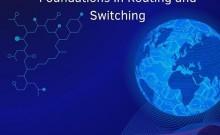
Apart from sharing a border with India, what do Pakistan, Bangladesh and Nepal have in common? They are all prime targets ofmalware attacks. Microsoft has released the 20th volume of its bi-annual Security Intelligence Report and it reveals an increasing trend in the number of malware encounters.
Focusing on Q3 and Q5 2015, the report analyses the landscape for malware, threats and vulnerabilities by studying data collected from over 600 million computers across the world. It also lists the Palestinian Territories and Indonesia as prime targets.
"We look at north of 10 million attacks on identities every day," Microsoft manager Alex Weinert told Reuters, adding that the attacks don't always succeed.
According to the report, Japan, Finland, Norway and Sweden are some of the countries that are largely left alone by cybercriminals with between 7.81 and 13.51 percent of the computers in these countries encountering malware attacks. In contrast, over 63 percent of computers in Pakistan have encountered a malware attack. India has an encounter rate of about 44 percent, but in contrast, only 53.86 computers are cleaned per thousand or mille (CCM), whereas Pakistan has a CCM rate of 71.34.
According to the report, nearly half the attacks have their origins in Asia, with about a fifth originating in Latin America.
The report also sheds light on a hacking group Microsoft has codenamed Platinum. According to the report, the group has been active since 2009, with a majority of its attacks targeted at governments and related organisations in South and Southeast Asia. The group apparently uses custom-made malware and is also reported to be developing malware that steals information during normal working hours, remaining dormant during downtime so as not to arouse suspicion.

















